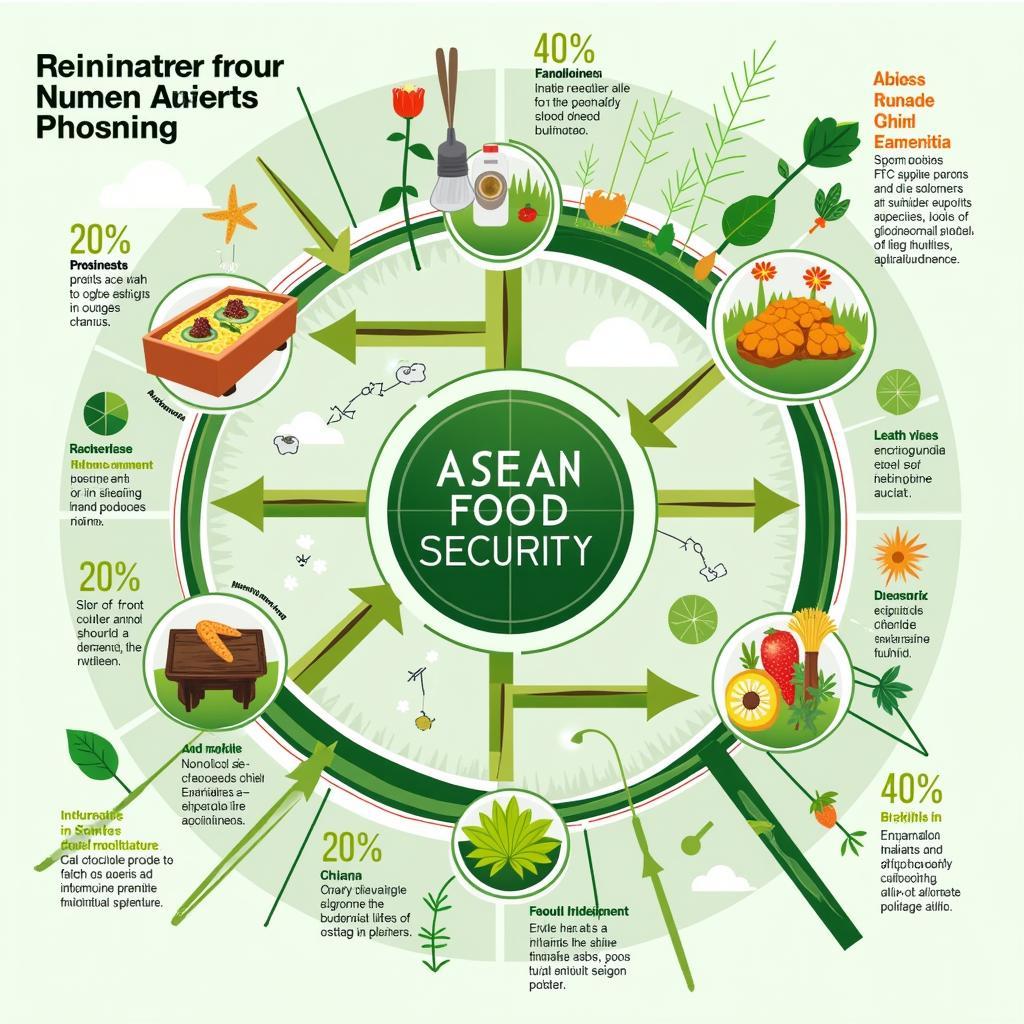The Agreement On The Asean Food Security Reserve (AFSR) is a crucial mechanism for addressing food shortages and price volatility within the Southeast Asian region. It aims to collectively manage food reserves and ensure accessibility during emergencies, fostering regional cooperation and stability. This agreement is not merely about stockpiling food; it’s about building a resilient and interconnected food system for ASEAN’s future.
Understanding the ASEAN Food Security Reserve Agreement
The AFSR, established in 1979, is a testament to ASEAN’s commitment to collaborative food security. It signifies the understanding that food security is not just a national concern but a shared regional responsibility. The agreement outlines procedures for establishing and managing food reserves, including mechanisms for information sharing, emergency response, and resource mobilization. The goal is to create a safety net that protects vulnerable populations and mitigates the impact of unforeseen crises.
What exactly does the agreement on the ASEAN food security reserve entail? It involves member states contributing to a collective reserve of essential food commodities, primarily rice. This reserve isn’t meant for everyday consumption, but rather serves as a buffer during times of scarcity. It allows member states to quickly access supplies in emergencies, preventing widespread hunger and maintaining social stability.
ASE Plustime could provide valuable insights into how ASEAN is working to enhance its food security mechanisms.
Key Components of the AFSR
The effectiveness of the AFSR hinges on several crucial components:
- Early Warning System: A robust system to monitor and predict potential food crises, allowing for proactive intervention.
- Emergency Response Mechanisms: Clearly defined procedures for accessing the reserve and distributing food aid during emergencies.
- Resource Mobilization: Strategies for pooling resources and coordinating financial assistance to support affected member states.
- Information Sharing: A platform for exchanging data on food production, consumption, and trade within the region.
- Capacity Building: Programs to strengthen national food security systems and enhance regional cooperation.
These components work together to create a comprehensive framework for managing food security challenges, reinforcing the importance of the agreement on the ASEAN food security reserve.
Challenges and Future Directions
While the AFSR has undoubtedly contributed to regional stability, it faces ongoing challenges:
- Funding and Resource Constraints: Securing adequate funding to maintain the reserve and support emergency operations.
- Coordination and Implementation: Ensuring effective coordination among member states during crises.
- Climate Change and Environmental Impacts: Adapting to the increasing frequency and severity of climate-related disasters that threaten food production.
- Evolving Food Security Needs: Addressing the changing dietary needs of a growing population and the diversification of food sources.
Navigating these challenges requires continuous improvement and adaptation. ASEAN must strengthen its commitment to resource mobilization, enhance coordination mechanisms, and integrate climate resilience into its food security strategies. Furthermore, the agreement on the ASEAN food security reserve must evolve to address the complex interplay of factors shaping the future of food security in the region.
ASE ASE Class 6 curriculum might include detailed studies about the AFSR and its implications for regional development.
 ASEAN Food Security Future
ASEAN Food Security Future
Conclusion
The agreement on the ASEAN food security reserve remains a vital instrument for regional cooperation and stability. It provides a framework for collective action, resource sharing, and emergency preparedness, safeguarding the region against food crises. By addressing existing challenges and adapting to future needs, ASEAN can strengthen the AFSR and ensure food security for all its citizens.
FAQ
- What is the primary purpose of the AFSR? To provide a safety net against food shortages during emergencies.
- Which commodity is the main focus of the AFSR? Rice.
- How does the AFSR contribute to regional stability? By preventing widespread hunger and social unrest during food crises.
- What are some of the challenges facing the AFSR? Funding constraints and coordination difficulties.
- How can the AFSR be strengthened for the future? By enhancing resource mobilization, improving coordination, and integrating climate resilience.
- What year was the AFSR established? 1979.
- How can I learn more about ASEAN cooperation initiatives? You can find more information through resources like ASE JO.
Scenarios:
- Scenario 1: A typhoon severely damages rice crops in several ASEAN countries. The AFSR is activated, and rice reserves are released to affected areas, preventing a humanitarian crisis.
- Scenario 2: A sudden surge in global food prices threatens food security in ASEAN. The AFSR acts as a buffer, stabilizing prices and ensuring access to affordable food for vulnerable populations.
Further Reading
Explore more about ASEAN and related topics on our website:
- ASE Plustime
- ASE ASE Class 6
- ASE JO
Need support? Contact us 24/7: Phone: 0369020373, Email: aseanmediadirectory@gmail.com, Address: Thon Ngoc Lien, Hiep Hoa, Bac Giang, Vietnam.